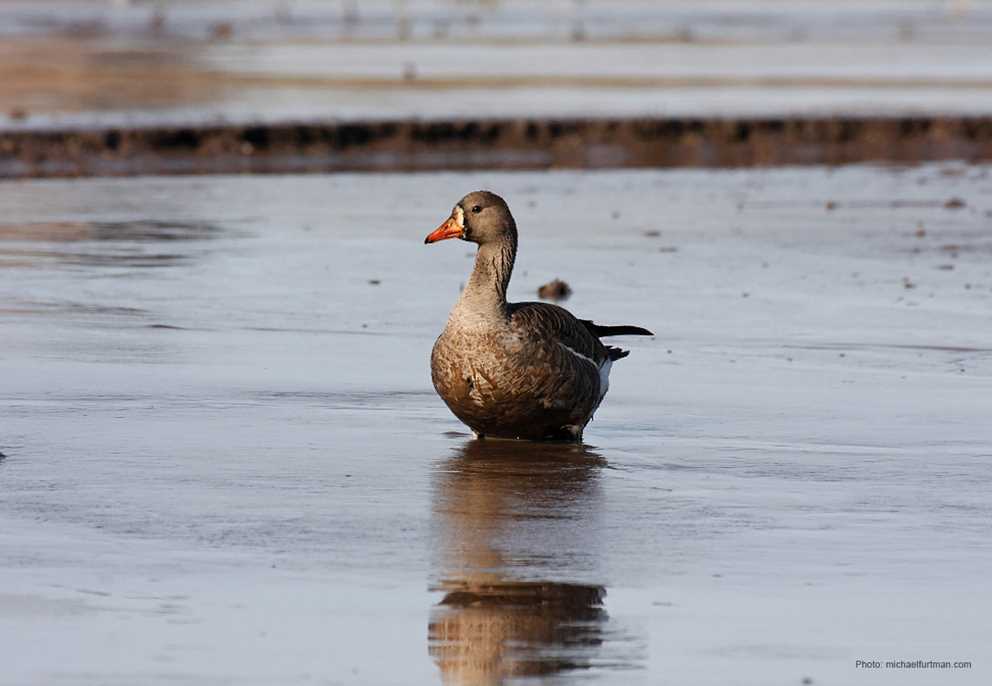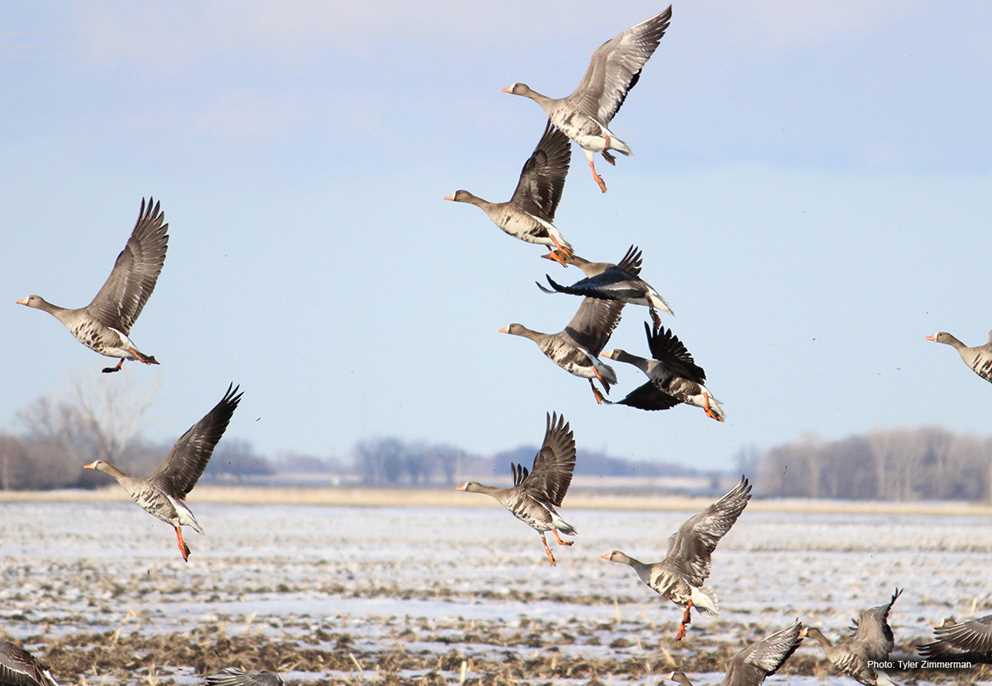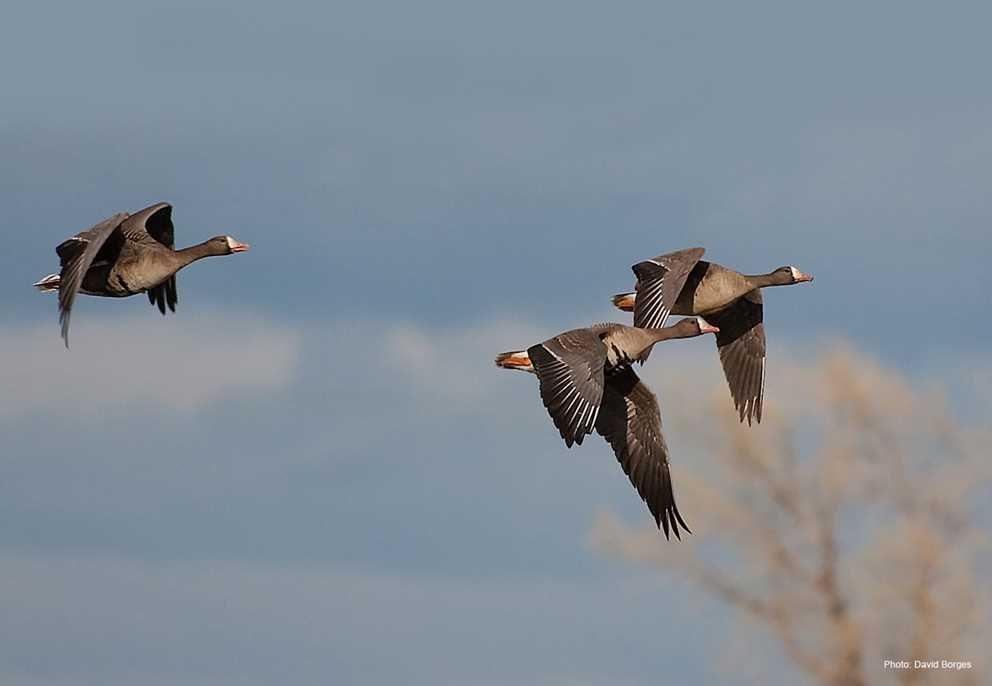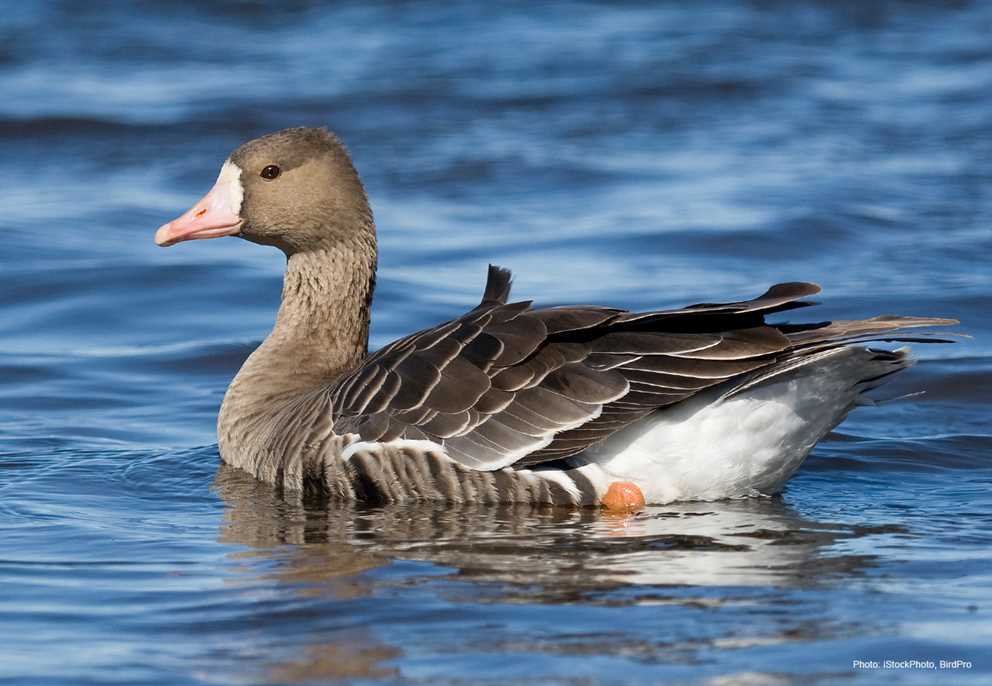Overview
The Greater White-fronted Goose has a circumpolar distribution with breeding populations in both North America and Asia. Their breeding range in North America includes Arctic and sub-Arctic tundra and taiga from western Alaska to Nunavut, Canada from the Aleutian Islands to Baffin Island. There are five subspecies, three of which occur in North America (A. a. sponsa and A. a. elegasi in western North America, A. a. gambelli in eastern and central North America), and A. a. flavirostris which breeds in Greenland and winters in the United Kingdom and Ireland; and A. a. albifrons occurs in Europe and Asia). Two of the subspecies have somewhat restricted breeding ranges, A. a. elegasi comprising approximately1,000 birds in Cook Inlet, Alaska, and A. a. flavirostris, consisting of 18,800 birds breeding in western Greenland. In North America, wintering populations predominantly use habitats in the Central Valley, California, western Washington and Oregon, the Mississippi Alluvial Valley and Gulf Coast US and northern Mexico and the Central Highlands in Mexico. Greater White-fronted Geese are easily distinguished from other species of geese in North America.
Adults have a white forehead, variable black patches or bands on the lower breast and belly, a pinkish-orange bill and orange legs. The back feathers are light brown tipped in tan, the rump and vent are white, and the tail feathers are black. Immature birds are similar to adults, but have less pronounced to no white facial markings, and no black bands or bars on the breast and belly.
Description
Key Identification Features
- Adults are tan overall, have a white forehead, variable black patches or bands on the lower breast and belly, a pinkish orange bill and orange legs. The tan back feathers are tipped in light tan to buff, the rump and vent are white, and the tail feathers are black.
- Immature birds are similar to adults, but have less pronounced to no white facial markings, and no black bands or bars on the breast and belly.
Male/Female Average Length and Weight
- Weight: Males 4.6–6.6 lbs.; Females 4.0–6.0 lbs.
- Wingspan: Males 17.2 in.; Females 16.3 in.
Male and Female Identification
- Alternate (Breeding) and Basic Plumage: Both adult plumages of both sexes are identical. Adults have a white forehead, variable black patches orbands on the lower breast and belly, a pinkish orange bill and orange legs. The back feathers are light brown tipped in tan, the rump and vent are white, and the tail feathers are black. Immature birds are similar to adults, but have less pronounced to no white facial markings, and no black bands or bars on the breast and belly.
In-flight Identification
- A white line in the shape of a U can be seen at the base of the tail.
Vocalizations
- Very vocal. Often described as “laughing” while calling in flight, a 2 or 3 syllable “kyow-lyow”, a “buhk buhk buhk” in in flight or greeting call. Immature calls are higher pitched usually with fewer syllables.
Similar Species
- In North America, unmistakable. Immature birds could be confused with occasional Eurasian fall and winter vagrants Taiga-bean Goose (A. fabalis), Tundra-bean Goose (A. serrirostris), or Pink-footed Goose (A. brachyrhyncus) all of which are native to Eurasia and have dark tipped bills that Greater White-fronted Geese lack. Immatures may be confused with escaped domestic Graylag Geese (A. anser), which are much larger, and have a distinct yellow or pink eye ring.
Habitat Preferences
- Breeding: Greater White-fronted Geese nest in Arctic tundra and taiga areas, usually on mounds or other areas slightly elevated and not subject to flooding, with dense grasses, sedges, and other plants. They typically nest more inland of Brant or Snow Goose colonies and may be found in similar areas as small subspecies of Canada Goose. Nests are usually near water.
- Migration and Wintering: In winter and migration, White-fronted Geese use sedge meadows, estuaries and river deltas, larger wetlands, and marshes, and they frequently forage in agricultural fields.
Foraging Habits and Diet
- Breeding Season: Greater White-fronted Geese are predominantly vegetarian, grazing, grubbing, or probing various emergent plants and agricultural grains. Vegetation consumed includes tubers, roots, stems, and leaves of various emergent and aquatic plants, sedges, and grasses.
- Migration and Winter: In migration and winter, Greater White-fronted Geese have adapted to use agricultural fields and feed heavily on waste grain and winter cereal crops.
Breeding Habits
- Monogamy: Greater White-fronted Geese maintain monogamous, lifelong pair bonds.
- Nest Locations: The nest is a scraped bowl near water with nearby vegetation woven into the nest brim.
- Clutch Size: The average clutch size in North America is 4 to 5 eggs. The eggs are creamy white to pale tannish white, elliptic to ovate, and average 3.2 by 2.1 in. The incubation period is 25 days, with females performing all incubation duties. Males provide nest defense.
Migration and Distribution
- Fall Migration: Migration begins as early as August, with nonbreeding flocks arriving in Prairie Canada as early as late-August. Peak migration in Prairie Canada is in late September to early October, with arrivals on wintering areas from mid-October to mid-November.
- Spring Migration: Spring migration usually begins in February, with birds then staging in mid-latitude areas until they depart for and arrive on nesting areas in May to early June, somewhat dependent on ice conditions.
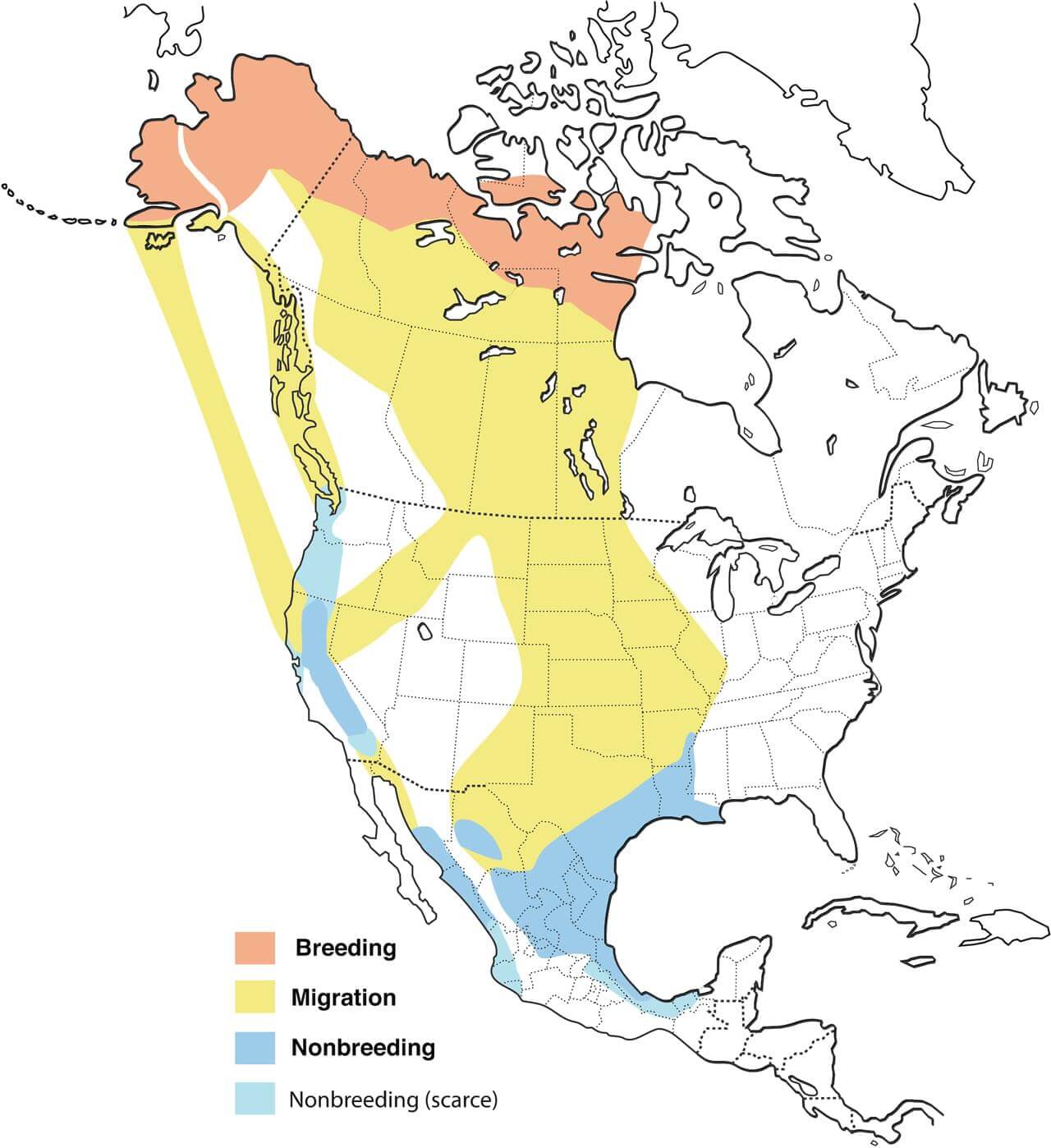
Conservation Status
- IUCN Status: Least Concern
- Population Status: The population is stable to increasing throughout their range in North America. In North America three sub-populations occur; the Pacific Greater White-fronted Goose (A. a. sponsa) that numbers 685,000 birds, the Western Greater White-fronted Goose (A. a. gambelli) estimated at 2,600,000, and the Tule Greater White-fronted Goose (A. a. elegasi) estimated at 8,000–13,000 birds. The population of White-fronted Geese as a whole, in North America, has grown substantially in recent decades.
- Conservation Concerns: The primary threats include habitat loss and climate change.
- Conservation Focus: Conservation efforts focus on protecting and restoring habitat, and monitoring the population.
Harvest Information
- An average of 229,162 White-fronted Geese were harvested per season across the US during the 2019 through 2022 hunting seasons.
- White-fronted Goose harvest is typically highest in the Mississippi Flyway, accounting for 50 to 60 percent of the total US harvest.
- The top three states for Greater White-fronted Goose harvest, based on annual averages across the 2019–2022 hunting seasons, were Arkansas (74,669), California (62,984), Louisiana (24,226).
